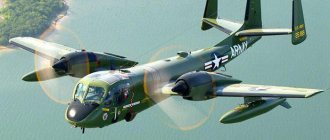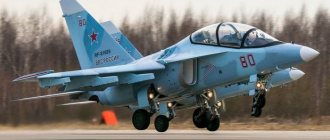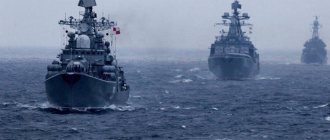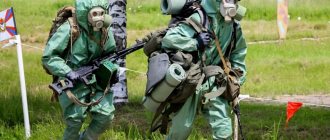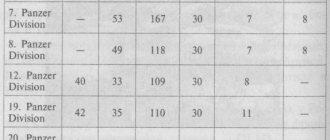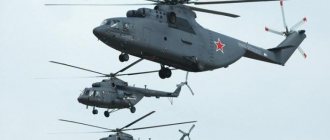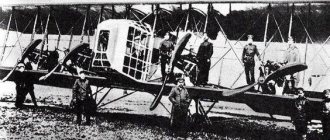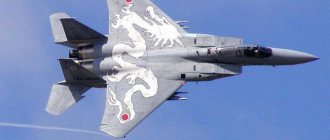The Greek word "strategy" expresses the concept of a meaningful plan to achieve a major goal. In the military aspect, this means a directed sequence of actions with the goal of achieving victory in an armed conflict as a whole, without detailing and concretizing individual stages. To accomplish this task, modern armed forces of some countries have special means. These include special reserves, missile forces, nuclear submarine fleet and strategic aviation. The Russian Air Force has two types of long-range bombers capable of striking remote targets almost anywhere in the world.
Brief history of domestic strategic aviation
For the first time in the world, strategic bombers appeared in the Russian Empire. The requirement for this class of airplanes was the ability to deliver a sufficiently large amount of ammunition to the target and cause significant damage to the economy and industry of a hostile country.
60 bomb carriers of the Ilya Muromets type, which made up a special air squadron, while remaining invulnerable, posed a serious danger to the cities and factories of Austria-Hungary and Germany throughout the First World War, during which only one aircraft of this type was lost.
The revolution and civil war set back the development of the aviation industry. The school of aircraft construction was lost, the designer of the Muromets, Sikorsky, emigrated from the country, and the remaining copies of the world's first long-range bomber died ingloriously. The new authorities had other concerns; their plans did not include defense. The Bolsheviks dreamed of a world revolution.
Aircraft for defense
Russian strategic aviation, in its concept, was a defensive weapon, since the capture of a destroyed industrial base, as a rule, is not included in the plans of the aggressor. In the pre-war years, the USSR created a unique TB-7 bomber, superior to the best example of this class at that time, the B-17 “Flying Fortress”. It was on this plane that V. M. Molotov visited Great Britain in 1941, freely crossing the airspace of Nazi Germany. However, this miracle of technology was not mass-produced.
After the war, the USSR completely copied the American B-29 (Tu-4); the need for this type of aircraft became urgent after the emergence of a nuclear threat, and there was not enough time to develop its own design. However, with the advent of jet interceptors, this bomber also became obsolete. New solutions were required, and they were found.
IL-4 armament
Il-4/DB-3F bombers were equipped with two types of weapons - for the destruction of enemy targets (the so-called “offensive” weapons) and weapons for their own defense (“defensive” weapons). Bombs of various types were used as offensive weapons - from FAB-5 to TsAB-P-40, both factory-made and converted from artillery shells. The design of the aircraft included a suspension for them. The total weight of the bombs reached 1 ton, with external suspensions it could reach up to 2.5 tons.
ShKAS machine guns in the amount of 3 units were used as defensive weapons, which were installed in the bow, on the turret and in the lower specially attached hatch. 1 machine gun had a caliber of 12.7 mm, 2 machine guns had a caliber of 7.62 mm.
Rocket or plane?
Along with nuclear missile submarines and intercontinental ballistic missiles, strategic aviation also solves the problem of countering global threats. Based on the carrier class, Russia's nuclear weapons are divided into these three components, forming a kind of triad. After the appearance of fairly advanced ICBMs in the 50s, the Soviet leadership had certain illusions about the versatility of this delivery vehicle, but they decided not to curtail the design work that began under Stalin.
The main incentive for continuing research in the field of building a heavy vehicle with a long range was the adoption by the US Air Force in 1956 of the B-52 bomber, which had subsonic speed and a large combat load. A symmetrical response was the Tu-95, a four-engine aircraft with swept wings. As time has shown, the decision to develop this project was correct.
B-2 Spirit
Strategic heavy bomber. The first production aircraft with a flying wing design. Designed to break through frequent air defenses and deliver conventional or nuclear weapons. The B-2 Spirit began flying in 1983, production stopped in 1999. 21 units were built, many were named after some American state. The B-2 Spirit is the most expensive aircraft in the history of aviation, the cost of the car is estimated at $1 billion.
Tu-95 vs B-52
After the collapse of the USSR, the strategic carrier of nuclear weapons Tu-95 entered the operational composition of Russian aviation. Despite its venerable age, this vehicle continues to serve as a missile carrier. The large, powerful and rugged design allows it to be used as an air-launched launcher, just like its overseas counterpart, the B-52. Both aircraft entered service almost simultaneously and have approximately similar technical characteristics. Both the Tu-95 and the B-52 cost the states dearly at one time, but they were designed and made to last, and therefore have a very long service life. Volumetric bomb bays accommodate cruise missiles (X-55), which can be launched from the side, which creates conditions for delivering a nuclear strike without crossing the border of the attacked country.
After modernizing the Tu-95MS and dismantling the release mechanisms for free-falling ammunition, the Russian long-range aviation actually received a new strategic aircraft equipped with modern navigation equipment and guidance systems.
Design Features
When designing aircraft, A. N. Ilyushin always adhered to the rule: never give priority to individual technical indicators, for example, load capacity or speed. Thanks to this, his projects were distinguished by the optimal combination of all flight and technical characteristics of the machines: speed and flight range, ceiling, load-carrying parameters, vehicle weight, weapons, on-board equipment and corresponded to the real conditions of their use.
He used this approach when developing the DB-3. When creating it, the designer followed the main criterion - to ensure the combat effectiveness of the aircraft in real combat conditions. This approach was of paramount importance in the success of the DB-3 and Il-4 aircraft.
The new aircraft had external differences from previous modifications with a smoother and longer nose. The airframe design has changed. It had the design of a 2-engine cantilever monoplane. All kinds of small units previously used in large quantities no longer corresponded to large-scale production technologies. Many components began to be made by stamping, and almost all frame assembly was performed by open riveting. This technology made it possible to reduce the labor intensity of manufacturing and improve the quality of the product.
S. V. Ilyushin placed the main emphasis in the design scheme of the DB-3 on the wing. A new elongated wing shape was developed. In terms of load-bearing properties, the new wing was inferior to the wing of its predecessor DB-2, but made it possible to develop higher speeds and provide a high level of aerodynamics. This was achieved by using a smooth skin, a doubly convex profile, a smaller wing area, an improved landing gear retraction scheme and other structural changes. As a result, the aerodynamic properties of the DB-3 became much better than those of the DB-2. The aircraft's performance characteristics are given in the table.
Air-launched missile bases
Apart from the United States, only the Russian Federation has a fleet of long-range bombers in the world. After 1991, it was virtually inactive; the state did not have enough funds to maintain technical combat readiness and even for fuel. Only in 2007 did Russia resume strategic aviation flights over various regions of the planet, including along the American coasts. Tu-95 missile carriers spend almost two days non-stop in the air, refuel and return to the airbase, demonstrating the ability to contribute to a global retaliation strike in the event of a nuclear conflict. But not only these machines can perform the task of deterrence. There is also Russian supersonic strategic aviation.
Don't shoot "white swans", it's useless
The adoption of the B-1 strategic supersonic bomber, widely announced back in the seventies, into service by the US Air Force could not go unnoticed by the Soviet leadership. In the early eighties, the Soviet air fleet was replenished with a new aircraft, the Tu-160. After the collapse of the USSR, Russian strategic aviation inherited most of them, with the exception of ten pieces cut into scrap metal in Ukraine and one “White Swan”, which became an exhibit of a museum in Poltava. In terms of its technical and flight characteristics, this missile-carrying bomber is a model of a new generation; it has a variable sweep wing, four jet engines, a stratospheric ceiling (21 thousand meters) and a significantly larger combat load than the Tu-95 (45 tons versus 11 ). The main advantage of the White Swan is its supersonic speed (up to 2200 km/h). The combat range allows it to reach the American continent. Intercepting an aircraft with such parameters seems problematic to specialists.
History of the IL-4
Long before the war, back in the spring of 1933, and much earlier than the IL-2 project, S.V. Ilyushin decided to build a long-range bomber aircraft. The creation of such an aircraft was necessary to increase the country's defense capability. Without breaking away from the project of a short-range bomber (BB-2), S. V. Ilyushin, on his own initiative, in a short time completed the development of a project for a long-range bomber, formulated and approved the main technical characteristics of the aircraft.
Soon a prototype of the new TsKB-26 aircraft was built. Tests confirmed the good flight qualities of the machine. The aircraft had excellent maneuverability - for the first time on an aircraft of this class, test pilot V.K. Kokkinaki performed the “Nesterov Loop” aerobatic maneuver.
On May 1, 1936, the bomber was presented to the general public in the skies of the capital.
In the same year, several world records were set on it, which also had political significance for the Soviet Union - the world community was shown a Soviet aircraft, which in terms of speed, ceiling and flight range was superior to aircraft of its class. Records were set by pilot V.K. Kokkinaki.
Soon another copy of the long-range bomber, called TsKB-30 (or DB-3), was built and taken into the air. It was fully equipped with weapons for offensive and defensive purposes, and had superiority over its predecessor in flight parameters and bomb load. The aircraft was adopted by the Air Force even before the end of state tests.
DB-3F was an improved continuation of the DB-3. Modernization of the DB-3 began in 1938, and in May 1939, test pilot V.K. Kokkinaki performed a test flight on it. The vehicle had improved flight parameters (speed - 445 km/h, flight range - 5000 km, bomb load - 1000 kg).
The production of the aircraft was organized simultaneously at several aircraft factories. The first production aircraft were built in November 1939. Adopted into service by the Air Force several years before the start of the war, the aircraft were well mastered by the aircrews of the air force and navy.
In December 1940, a Government Decree was issued on a new system for the formation of aircraft designations. According to this document, the DB-3F received a new name Il-4. With this name, the aircraft entered the Great Patriotic War and remained a legendary combat vehicle on the pages of its history. A photo of the Il-4 aircraft is shown below.
Conditionally strategic Tu-22
The structure of strategic aviation in the USSR and Russia has much in common. The aircraft fleet is inherited, it can serve for a long time, but mainly consists of two types of aircraft - Tu-95 and Tu-160. But there is another bomber that does not fully meet the strategic mission, although it can make a decisive contribution to the outcome of a global conflict. The Tu-22M is not considered heavy and belongs to the medium class; it develops supersonic speed and can carry a large number of cruise missiles. This aircraft does not have the flight range typical of intercontinental bombers, and therefore is considered conditionally strategic. It is designed to strike bases and bridgeheads of a potential enemy located in Asia and Europe.
Russian Aviation
Number of world military aircraft fleet
| A country | Sun Park | % | |
| 1 | USA | 13 266 | 25 |
| 2 | Russia | 4 163 | 8 |
| 3 | China | 3 210 | 6 |
| 4 | India | 2 123 | 4 |
| 5 | South Korea | 1 649 | 3 |
| 6 | Japan | 1 561 | 3 |
| 7 | Pakistan | 1 372 | 2 |
| 8 | France | 1 229 | 2 |
| 9 | Türkiye | 1 055 | 2 |
| 10 | Egypt | 1 054 | 2 |
| Rest | 23 208 | 43 | |
| Total | 53 890 | 100 | |
The Russian Aerospace Forces were formed on August 12, 2015 after the merger of the Air Force and the Aerospace Defense Forces and solve a wide range of tasks:
- Reflecting attacks and providing protection from aggressive enemy actions against administrative facilities, political centers, military groups, industrial and economic regions of Russia, and the most important infrastructure zones.
- The use of a wide range of weapons against the enemy, including nuclear weapons.
- Carrying out combat operations in cooperation with other branches of the military.
- Destruction of enemy cruise, tactical and ballistic missiles, as well as unmanned attack aerial vehicles.
- Providing management personnel with accurate information about the movement of missiles and warning of a possible attack.
- Surveillance in space and detection of threats to objects on the territory of Russia and its allies, defeat of space attack weapons.
- Launching special vehicles into space, managing a constellation of satellites.
Currently, the Aerospace Forces of the Russian Federation include the Air Force, the Air and Missile Defense Forces, and the Space Forces. The Air Force consists of Long-Range, Military Transport, Operational-Tactical and Army Aviation. The reform that began in 2008 ended with the formation of 4 armies instead of 6, which subsequently became part of the updated military districts.
Until 1998, the air and missile defense troops were a separate branch of the Russian Armed Forces, then they were merged with the Air Force, and later reorganized into 11 aerospace defense brigades. After unification in 2015, the new troops received the abbreviated name PVO-PRO VKS. Using appropriate means, they must protect from and repel enemy strikes, as well as destroy ballistic missiles.
Space forces are designed to protect the country from attacks by a potential enemy from near-Earth space. From 2001 to 2011, they functioned as a separate branch of the military, then they were part of the Air Force, and since mid-2015 they have been part of the Aerospace Forces. The main tasks solved by these troops are monitoring space objects in order to detect threats, launching special vehicles into space, and maintaining satellites in a state of readiness for use.
* * *
Russian military aviation has more than 1,800 aircraft, including more than 800 Su-27, Su-30SM, Su-33, Su-35S, MiG-29, MiG-31 fighters and their modifications, about 200 Su-34, Su-24M front-line bombers and their modifications, over 200 Su-25 attack aircraft, about 150 Yak-130 and other training aircraft, about 70 Tu-95 and Tu-160 strategic bombers and more than 40 Tu-22M3 long-range bombers.
In addition, the Aerospace Forces has about 400 military transport aircraft and Il-78 refueling aircraft, as well as more than 20 A-50 and A-50U airborne early warning systems.
The helicopter fleet includes about 1,500 attack, multi-purpose and transport-landing helicopters Mi-8, Mi-24, Mi-35, Mi-26, Mi-28N, Ka-52.
Russia's military aviation fleet ranks second in the world in terms of the number of aircraft and helicopters. This data is contained in the annual World Air Forces 2022 review published on FlightGlobal.com.
According to this study, at the beginning of 2022, the fleet of military aircraft and helicopters of the Russian Aerospace Forces consisted of 4,163 aircraft, which is 8% of the global figure, second in number only to the United States - 13,266 aircraft and helicopters, 25% of the global figure. In third place is China, which has 3,210 military aircraft and helicopters, or 6% of the global total.
The WAF 2022 Survey notes that the global military fleet has been fairly stable over the past year since the previous survey, declining by 0.2% or just 63 aircraft. Looking at the regions of the world, only two registered growth compared to the previous survey - Russia and the CIS countries, whose combined sizes increased from 4,904 to 5,016 units, representing an increase of 2%. The Russian Aerospace Forces account for 83% of this amount.
According to the Center for Analysis of Strategies and Technologies, in 2022 there was a decrease in the supply of new combat aircraft to the Armed Forces of the Russian Federation.
In fact, the VKS received ten Su-35S and eight Su-34, which in total amounts to only 18 aircraft. Composition of the Russian Aerospace Forces for 2022 * - planned orders that may be revised
| Aircraft type | Active | Ordered |
| Attack aircraft | ||
| MiG-29/35 | 251 | 3+31* |
| MiG-31 | 132 | |
| Su-24 | 274 | |
| Su-25 | 194 | |
| Su-27/30/35 | 429 | 12+42* |
| Su-30SM2 | 21* | |
| Su-34 | 123 | 4+11* |
| Su-57 | 76 | |
| Tu-142MK/MZ/MR | 22 | |
| Il-38/Il-38N | 54 | |
| Tu-22M | 67 | |
| Tu-95 | 42 | |
| Tu-160 | 16 | 10+40* |
| Special purpose aircraft | ||
| An-12 | 4 | |
| An-26 | 1 | |
| An-30 | 15 | |
| Il-20/22 | 24 | |
| A-50 | 15 | |
| IL-76 | 1 | |
| IL-80 | 3 | |
| Tu-134 | 1 | |
| Tu-154 | 1 | |
| Tu-214 | 2 | |
| Be-200PS | 1 | 2 |
| Refuelers | ||
| IL-78 | 19 | 31* |
| Transport aircraft | ||
| An-12 | 56 | |
| An-22 | 5 | |
| An-26 | 113 | |
| An-72 | 29 | |
| An-124 | 4 | |
| An-140 | 3 | |
| An-148 | 15 | |
| IL-18 | 2 | |
| IL-76 | 109 | 33+9* |
| IL-78 | 1 | |
| IL-96 | 10* | |
| Il-112V | 62* | |
| L-410 | 43 | |
| Multi-role aircraft | 100* | |
| Tu-134 | 5 | |
| Tu-154 | 2 | |
| Combat helicopters | ||
| ASS355 | 2 | |
| H125M/AS350 | 3 | |
| Ka-27 | 6 | |
| Ka-52 | 101 | 55+25* |
| Ka-62 | 100* | |
| Ka-226 | 36 | |
| Mi-2 | 1 | |
| Mi-8/17/171 | 746 | 45 |
| Mi-24/35 | 330 | |
| Mi-26 | 44 | 15* |
| Mi-28 | 95 | 99 |
| Mi-38 | 2+6* | |
| Training aircraft and helicopters | ||
| Ansat | 50 | |
| DA42 | 9 | 26 |
| L-39 | 210 | |
| MiG-29/35 | 12 | 3 |
| Su-27 | 16 | |
| Tu-134 | 37 | |
| Yak-130 | 110 | 25* |
| Yak-152 | 150* | |
| Mi-2 | 29 | |
| Mi-28 | 12 | 12+36* |
The AST Center also reports that according to the State Defense Order, it is planned to deliver one Su-57 and ten Su-35S in 2022, and two Su-57 and five Su-35S in 2022.
On August 12, 2022, during an inspection trip to the Irkutsk Air Force, Russian Defense Minister Sergei Shoigu announced the planned signing by the end of the year of a contract for 46 aircraft, of which 21 are Su-30SM fighters upgraded to the SM2 version and 25 Yak-130 aircraft.
In August 2022, at the International Military-Technical Forum “Army-2018″, the Ministry of Defense of the Russian Federation and PJSC signed a contract for the supply of the first two serial fifth-generation Su-57 fighters to the Armed Forces (in the guise of the T-50S: T-50S-1 and T-50S-2) with “first stage” engines (“product 117”). The contract period is 2018-2020, with delivery of one aircraft each in 2022 and 2022. In June 2022, at the International Military-Technical Forum "Army-2019", the Ministry of Defense of the Russian Federation and PJSC signed a contract for the supply of a total of 76 serial fifth-generation Su-57 fighters to the Armed Forces, including the first two aircraft contracted in 2022. The contract period is 2027.
The first production Su-57 aircraft (T-50S-1, serial number 51001, tail number “01 blue”), built at KnAAZ, made its first flight in Komsomolsk-on-Amur in early December 2022 and was planned for transfer to the Ministry of Defense on 27 December, but on December 24, 2022, at the final stage of factory testing, it crashed as a result of an accident, presumably due to a malfunction in the aircraft control system.
The loss of the first production model of the Su-57 entailed a change in the management of PJSC." According to information, he will be forced to compensate for the loss at his own expense by producing another plane to replace the crashed one.
In 2016, the Russian Ministry of Defense ordered 150 Yak-152 light training aircraft for initial training of military pilots. Currently, the aircraft is undergoing the final stage of flight testing, and their serial production is being prepared at the Irkutsk Aviation Plant.
In 2022, the Russian Ministry of Defense signed a contract with the UAC for the supply of three Be-200PS aircraft to the Naval Aviation of the Navy, the first of which was to be delivered in 2022. On February 14, 2022, the first Be-200ES amphibious aircraft, intended for the Russian Ministry of Defense, took off. On July 20, the Be-200 "Alexander Mamkin" landed at the Gromovo airfield of the Western Military District, where it arrived to participate in the Main Naval Parade in St. Petersburg.
Aerobatic aerobatic team “Russian Knights”, which is part of the Aviation Equipment Display Center of the 4th Order of Lenin of the Military Testing and Personnel Training Center of the VKS Aerospace Forces named after V.P. Chkalova completed the transition to Su-35S multirole fighters at the beginning of July 2022.
On July 8, specialists from the Aviation Equipment Display Center completed a comprehensive inspection and acceptance of aircraft at the manufacturing plant in Komsomolsk-on-Amur, and Vityaz pilots conducted a control flight of the aircraft, checking the fighters in the air.
On July 9, the crews of the aerobatic team relocated the aircraft from the manufacturing plant to Kubinka near Moscow with an intermediate landing in Novosibirsk. Aircraft painted in the colors of the Russian flag are equipped as standard.
The first Su-35S aircraft entered service with Russian Knights in November 2022. Prior to this, the group’s aircraft fleet consisted of eight two-seat Su-30SM fighters received in October-November 2016. The Su-30SM fighters replaced the Su-27 fighters that the Russian Knights had flown since their formation in April 1991.
Note:
- Data on the Be-200PS, Tu-142, Yak-152 and Il-38 aircraft are not available in the WAF 2022 review. Information on aircraft data was added to the table during the preparation of the article, because of this, the final figures for the number of aircraft may not coincide with the WAF 2022 data.
- The number of ordered Yak-152 training vehicles is indicated according to media reports in 2016.
- The number of Be-200PS aircraft ordered for naval aviation was received from the AST Center.
- The number of Tu-142 anti-submarine aircraft is indicated as of 2022 and taken from Wikipedia.
- The number of Il-38 anti-submarine aircraft is indicated as of 2016 and is also taken from Wikipedia.
- According to The Military Balance, as of 2022, the Long-Range Aviation of the Aerospace Forces includes 44 Tu-95MS and 16 Tu-95MSM missile carriers (information from Wikipedia). According to JSC Splav NPO im. Ganichev, as of the end of 2022, Long-Range Aviation included 55 Tu-95MS and Tu-95MSM aircraft.
Andrey Velichko for the Russian Aviation website
- 12/12/2019 The Aerospace Forces include more than 4,000 combat aircraft and helicopters
- 01/27/2016 Modern technology in the Russian Aerospace Forces is 52%
- 09/30/2016 Composition of the Russian Aerospace Forces in Syria as of September 2016
- 01/05/2020 In 2022, the VKS will receive six modernized Tu-95MS
( 16 ratings, average: 5.00 out of 5)
VKS composition
Will there be new strategic bombers?
Russian strategic aviation currently consists of dozens of aircraft of three main types (Tu-160, Tu-95 and Tu-22). All of them are no longer new, they spent a lot of time in the air and, perhaps, it may seem to someone that these machines need to be replaced. Journalists who are far from military issues sometimes call the Tu-95 “Bear” a relic machine. However, any phenomenon should be considered in comparison. The Americans are not yet planning to scrap their B-52s; sometimes the grandchildren of the first pilots who mastered them fly them, but no one calls these aerial giants junk. As far as we know, our potential adversaries do not yet plan to build new types of strategic bombers, considering them, perhaps, a rapidly aging class of equipment. Most likely, the Russian side will not initiate a new round of the arms race.
